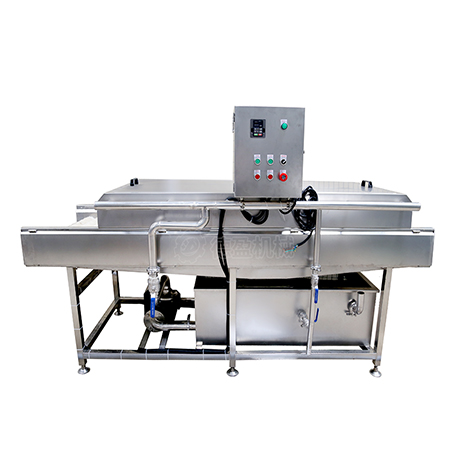The Vegetable And Fruit Washing Machine is a versatile piece of equipment designed to clean a variety of fruits and vegetables efficiently. Widely used in food processing facilities, restaurants, catering services, and even households, this machine ensures thorough cleaning, removes contaminants, and enhances food safety. This guide provides an overview of the machine's applications, maintenance practices, and tips for maximizing its performance.

Applications:
Food Processing Facilities:
Vegetable and Fruit Washing Machines are indispensable in food processing plants for cleaning large quantities of produce.
They are used to wash leafy greens, root vegetables, berries, citrus fruits, and other produce before further processing or packaging.
These machines help maintain hygiene standards, remove dirt, pesticides, and contaminants, and ensure the safety of processed foods.
Restaurants and Catering Services:
Commercial kitchens in restaurants and catering services rely on vegetable and Fruit Washing Machines to streamline food preparation.
These machines enable quick and efficient cleaning of fruits and vegetables, saving time and labor costs.
Clean produce enhances the quality and freshness of dishes, contributing to customer satisfaction and food safety.
Retail and Wholesale Markets:
Supermarkets, grocery stores, and wholesale markets utilize vegetable and Fruit Washing Machines to prepare produce for display and sale.
These machines help maintain the appearance and quality of fruits and vegetables, improving their shelf life and marketability.
By ensuring cleanliness and freshness, these machines contribute to customer confidence and loyalty.
Household Use:
Some households invest in compact vegetable and fruit washing machines to simplify kitchen tasks and ensure the cleanliness of their produce.
These machines are particularly useful for families consuming large quantities of fresh fruits and vegetables or for those concerned about food safety.
Home users appreciate the convenience and peace of mind offered by these machines, especially when cleaning items with irregular surfaces or hard-to-reach areas.
Maintenance Guide:
Regular maintenance is essential to ensure the optimal performance and longevity of vegetable and fruit washing machines. Follow these maintenance practices to keep your machine in top condition:
Cleaning:
Clean the machine thoroughly after each use to remove residues, dirt, and debris.
Use a mild detergent and water solution to wipe down all surfaces, including the interior, conveyor belts, spray nozzles, and drainage system.
Pay special attention to areas prone to buildup, such as the filter screens and drain pumps.
Inspection:
Regularly inspect the machine for signs of wear, damage, or malfunction.
Check conveyor belts, rollers, brushes, and other components for wear and tear, and replace them if necessary.
Inspect hoses, connections, and seals for leaks or damage, and repair or replace them promptly to prevent water wastage or contamination.
Sanitization:
Periodically sanitize the machine to eliminate bacteria, mold, and other harmful microorganisms.
Use food-safe sanitizing solutions recommended by the manufacturer to ensure the safety of the produce and compliance with health regulations.
Follow proper sanitization procedures, including flushing the system with sanitizer and allowing sufficient contact time before rinsing.
Calibration:
Calibrate the machine's settings, such as water temperature, pressure, and cycle duration, to achieve optimal cleaning results.
Use calibrated instruments to verify the accuracy of temperature and pressure readings and adjust them as needed.
Document calibration procedures and results for reference and quality control purposes.
Lubrication:
Lubricate moving parts, such as bearings, chains, and gears, according to the manufacturer's recommendations.
Use food-grade lubricants suitable for the specific components of the machine to prevent friction, corrosion, and premature wear.
Training:
Provide training for operators on the proper use and maintenance of the vegetable and fruit washing machine.
Ensure operators are familiar with safety procedures, operating instructions, and troubleshooting techniques to prevent accidents and minimize downtime.
Emergency Maintenance:
Develop an emergency maintenance plan to address unexpected breakdowns or malfunctions promptly.
Keep spare parts, tools, and equipment on hand for quick repairs, and establish procedures for contacting technical support or service providers when needed.




